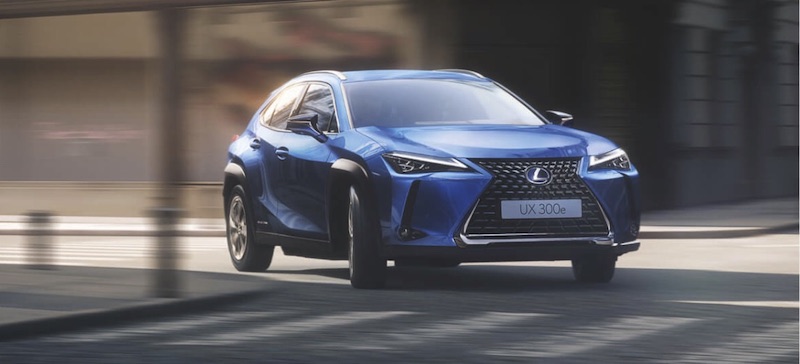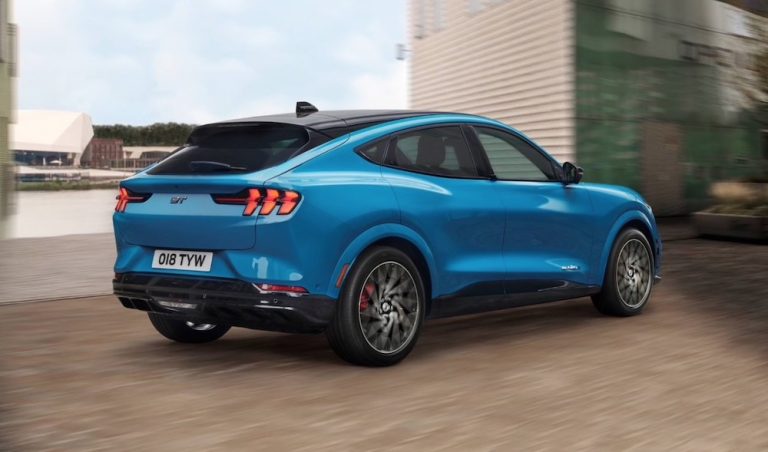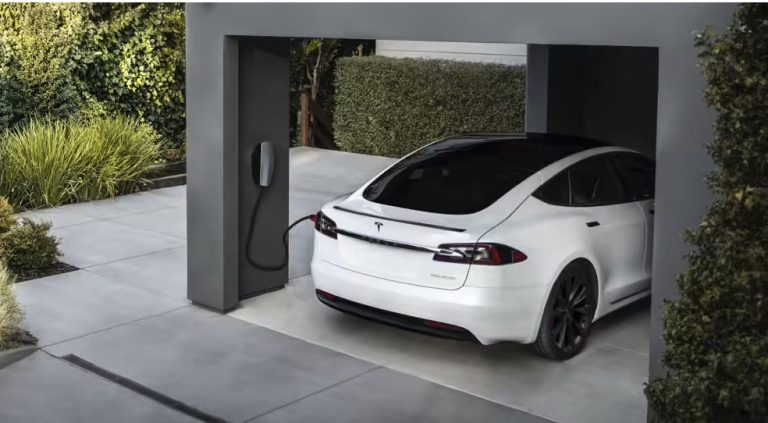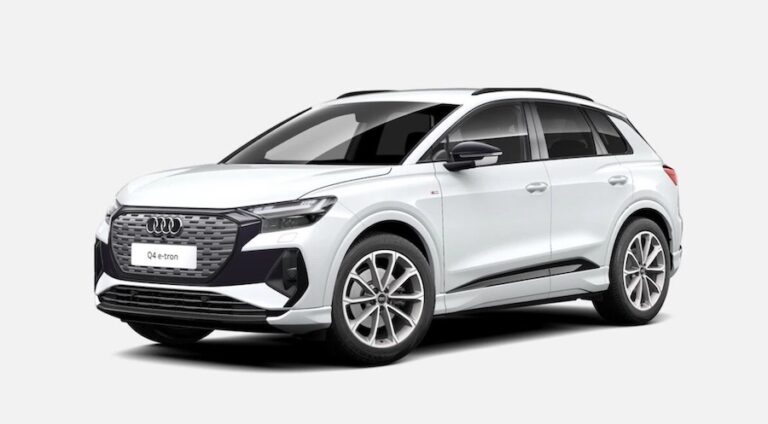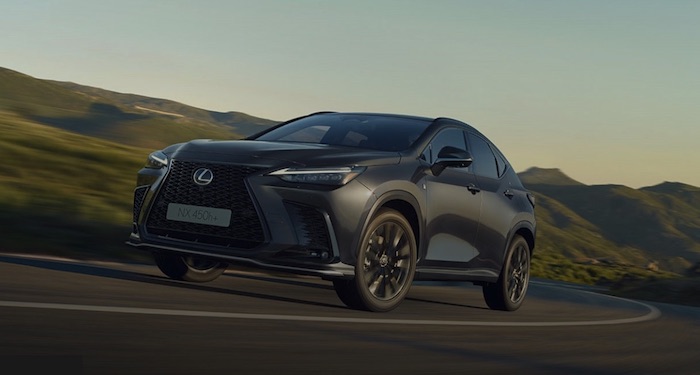Electric Cars: The Basics
For those of you new to zero-emission electric driving, we recommend a read of the following articles:
Sign up to the e-zoomed Electric Living newsletter
The All-Electric Lexus UX 300e SUV
Lexus, renowned for the manufacture of luxury cars, is owned by the Japanese automotive behemoth, Toyota Motor Corporation. Lexus was created in 1989 to compete against Japanese rivals, Honda Motor Company and Nissan Motor Company, who had established their premium brands, Acura and Infiniti, respectively. However, work on the Lexus concept commenced as early as 1983.
The Lexus brand is now a well recognised global automotive brand in the premium segment, with its luxury cars sold in more than 90 countries. The United States continues to be its largest market. Though Lexus is relatively late to the global electrification (EV) race, the company has been involved with hybrid technology since 2005, the year the hybrid version of the RX crossover made its debut.
The company has been a leader in ‘self-charging hybrid cars’. The company currently has 8 vehicles that use hybrid/ plug-in hybrid technology and has only one battery-electric vehicle (BEV). The company has the following plug-in electric vehicles (EVs):
- The all-electric Lexus UX 300e
- The Lexus NX plug-in hybrid (PHEV)
- The Lexus RX plug-in hybrid (PHEV)
- Lexus RZ 450e
The Lexus UX is a compact luxury SUV crossover. It was launched in March 2018 at the Geneva Motor Show. UE stands for ‘Urban Explorer’ and has been developed using the GA-C platform. The UX SUV is available as a mild hybrid and as a fully electric variant, the Lexus UX300e battery-electric SUV.
The premium EV is available in one EV battery size (54.3 kWh). Though not as large as some of the more recent BEV introductions, the e-SUV still has a decent EV range. The electric vehicle has a claimed zero-emission electric range up to 315 km (WLTP). However, depending on driving conditions, driving style, onboard services used, passenger load, etc, the real-world electric range will be lower, closer to 265 km.
A 265 km EV range is still a very useful e-range. Do keep in mind that the majority of our day-to-day driving needs are shorter commutes i.e. school runs, grocery store, gym, work, high street etc. In fact, in Ireland the average distanced travelled in a day is a mere 50 km. Even for motorway driving, the electric SUV offers decent practicality.
The EV is capable of DC charging up to 50 kW, which is a lower charging speed compared to alternative e-SUVs at a similar price (100 kW DC plus is fast becoming the norm!). Having said that, 50 kW DC capability is still fast and the EV battery can be charged 10% to 80% in 53 minutes. Perfect time for a meal break and rest before continuing with the journey.
The Lexus electric SUV has a 6.6 kW AC (single-phase) onboard charger. Though many EVs now offer a 3-phase onboard charger (11 kW), a single-phase onboard charger is still adequate, given that most homes in Ireland are powered by single-phase power supply.
For home charging via a dedicated single-phase EV charger, the EV can be fully charged in just over 8 hours. we at e-zoomed discourage the use of a 3-PIN domestic plug for charging an electric car. Also, given the increase in electricity prices, we recommend charging at home, overnight, when the tariff prices are cheaper.
The compact body is certainly advantageous for urban driving, in particular, given the excellent turning radius of 5.2m. However, the aggressive rear sloping roofline reduces the headroom available for the rear seats. The EV offers a decent boot space up to 486 L. The Lexus EV has a high quality interior, as one would expect from Lexus.
The electric SUV incorporates the Lexus Safety System +, reversing camera, intelligent parking sensors, Apple CarPlay and Android Auto as standard. The higher trims include wireless smartphone charger, smart keyless entry, sunroof, head-up-display (HUD), heating seats and heated steering wheel.
In terms of performance, the front-wheel drive (FWD) Lexus UX 300e is decent, despite the additional weight of the EV battery. The Lexus EV can achieve 0-100 km/h in 7.5 seconds (max power: 204 hp/ 300 Nm torque). The top speed of the EV is 160 km/h.
Bottom-line, electric driving is good for the environment and the wallet!
| PROS | CONS |
|---|---|
| Lexus high quality interior and specifications | Cheaper electric SUV alternatives available |
| Striking exterior styling and good build quality | Electric range not as good as alternatives. DC charging limited to 50 kW and onboard charger limited to 6.6 kW AC |
| Easy to drive and park in congested urban environments | Limited headroom for rear seat passengers |
The All-Electric Lexus UX 300e SUV (credit: Lexus)
| At A Glance | |
|---|---|
| EV Type: | Battery-Electric Vehicle (BEV) |
| Body Type: | SUV |
| Engine: | Electric |
| Available In Ireland: | Yes |
| Variants (1 Option) |
|---|
| Lexus UX 300e (from € 57,805) |
| EV Battery & Emissions | |
|---|---|
| EV Battery Type: | Lithium-ion |
| EV Battery Capacity: | Available in one battery size: 54.3 kWh |
| Charging: | 50 kW DC rapid charging (10%-80% SOC: 53 mins). Onboard charger 6.6 kW AC (0% – 100%: 8 hrs) |
| Charge Port: | Type 2 |
| EV Cable Type: | Type 2 |
| Tailpipe Emissions: | 0g (CO2/km) |
| Warranty: | 8 years or 160,000 km |
| Average Cost Of Residential Charging | |
|---|---|
| Battery net capacity: 16.7 kWh | € 4.00 |
| Battery net capacity: 30.0 kWh | € 7.19 |
| Battery net capacity: 39.2 kWh | € 9.39 |
| Battery net capacity: 45.0 kWh | € 10.78 |
| Battery net capacity: 50.0 kWh | € 11.98 |
| Battery net capacity: 64.0 kWh | € 15.34 |
| Battery net capacity: 71.0 kWh | € 17.01 |
| Battery net capacity: 77.0 kWh | € 18.45 |
| Battery net capacity: 90.0 kWh | € 21.57 |
| Battery net capacity: 100.0 kWh | € 23.97 |
- Note 1: The average cost of residential electricity in Ireland varies depending on the region, supplier and type of energy used. An average for Ireland is 23.97 cents/kWh.
- Note 2: Not all EV manufactures make available the data on net EV battery capacity, and in a number of instances the EV battery capacity advertised, does not state if it is gross or net capacity. In general, usable EV battery capacity is between 85% to 95% of the gross available capacity.
| Charging Times (Overview) | |
|---|---|
| Slow charging AC (3 kW – 3.6 kW): | 6 – 12 hours (dependent on size of EV battery & SOC) |
| Fast charging AC (7 kW – 22 kW): | 3 – 8 hours (dependent on size of EV battery & SoC) |
| Rapid charging AC (43 kW): | 0-80%: 20 mins to 60 mins (dependent on size of EV battery & SoC) |
| Rapid charging DC (50 kW+): | 0-80%: 20 mins to 60 mins (dependent on size of EV battery & SoC) |
| Ultra rapid charging DC (150 kW+): | 0-80% : 20 mins to 40 mins (dependent on size of EV battery & SoC) |
| Tesla Supercharger (120 kW – 250 kW): | 0-80%: up to 25 mins (dependent on size of EV battery & SoC) |
Note 1: SoC: state of charge
| Dimensions | |
|---|---|
| Height (mm): | 1545 |
| Width (mm): | 1840 |
| Length (mm): | 4495 |
| Wheelbase (mm): | 2640 |
| Turning Circle (m): | N/A |
| Boot Space (L): | 486 |
| UX 300e | |
|---|---|
| EV Battery Capacity: | 54.3 kWh |
| Pure Electric Range (WLTP): | 315 km |
| Electric Energy Consumption (kWh/100km): | 17.1 |
| Charging: | 50 kW DC rapid charging (10%-80% SOC: 53 mins). Onboard charger 6.6 kW AC (0% – 100%: 8 hrs) |
| Top Speed: | 160 km/h |
| 0-100 km/h: | 7.5 seconds |
| Drive: | Front-wheel drive (FWD) |
| Max Power (hp): | 204 |
| Torque (Nm): | 300 |
| Transmission: | Automatic |
| Seats: | 5 |
| Doors: | 5 |
| Kerb Weight (kg): | 1,785 – 1,840 |
| Colours: | 10 |
| NCAP Safety Rating: | Five-Star |
Types Of Electric Vehicles
| Type Of Electric Vehicle (EV) | Description |
| Mild Hybrid Electric Vehicles (MHEVs) | Mild hybrids use both an internal combustion engine (ICE) and electric motor. These cars are also known as ‘self-charging hybrids’. The vehicle uses regenerative braking (recuperated electric energy) to improve the fuel efficiency and to reduce tailpipe emissions (CO2 g/km). However, mild hybrids cannot be charged by an external power source (i.e. EV charger). The recuperated electric energy is also used to boost the the combustion engine enhancing acceleration. Automotive manufactures (OEMs) like Toyota are one of the pioneers in developing and introducing mild hybrid vehicles. The ubiquitous Toyota Prius mild hybrid is an excellent example. Toyota also helped popularise the use of mild hybrids in the premium segment via its wholly owned Lexus brand. |
| Plug-In Hybrid Electric Vehicles (PHEVs) | Plug-in hybrid electric vehicles (PHEVs) aim to achieve the same objectives like a MHEV i.e. increase fuel efficiency and reduce tailpipe emissions. However there is much difference between a PHEV and a MHEV. The PHEV has a larger electric motor and onboard EV battery that is used to assist the internal combustion engine (ICE), but also to propel the vehicle. In a MHEV, the small onboard electric motor does not propel the vehicle. PHEVs come in varied EV battery sizes, but in general, most PHEVs have an EV battery size below 20 kWh. A plug-in electric car is capable of up to 50 km on electric mode. However, some PHEVs are capable of a longer pure electric range. The Volvo XC60 PHEV is a good example of a plug-in hybrid electric vehicle. Moreover, a PHEV EV battery is charged by using an external power source to include, a domestic 3-PIN plug or a dedicated EV charger. |
| Battery-Electric Vehicle (BEV) | A battery-electric vehicle is more commonly referred to as a pure electric car. The EV is ‘pure’, in that, the vehicle only uses electric power for propulsion i.e. a BEV does not have an internal combustion engine (ICE). It is easy to recognise these zero-tailpipe emission green cars, as these vehicles are silent (except for the artificial noise) and do not have a tailpipe! The pure electric vehicles have a much larger onboard EV battery compared to a PHEV. The EV battery on a BEV can be as large as 120 kWh, though an average is 60 kWh. In any case, most BEVs have an EV battery larger than 30 kWh. BEVs also use regenerative braking to improve the vehicle efficiency and electric range. However, the main source for the EV range is the EV battery, which can only be charged using an external power source, like an EV charger. BEVs can vary in electric range. However the more recent BEVs have a range between 300 to 500 km (WLTP) on a single charge. As an example, the all-electric VW ID.3 has a range up to 540 km. |
While e-zoomed uses reasonable efforts to provide accurate and up-to-date information, some of the information provided is gathered from third parties and has not been independently verified by e-zoomed. While the information from the third party sources is believed to be reliable, no warranty, express or implied, is made by e-zoomed regarding the accuracy, adequacy, completeness, legality, reliability or usefulness of any information. This disclaimer applies to both isolated and aggregate uses of this information.









